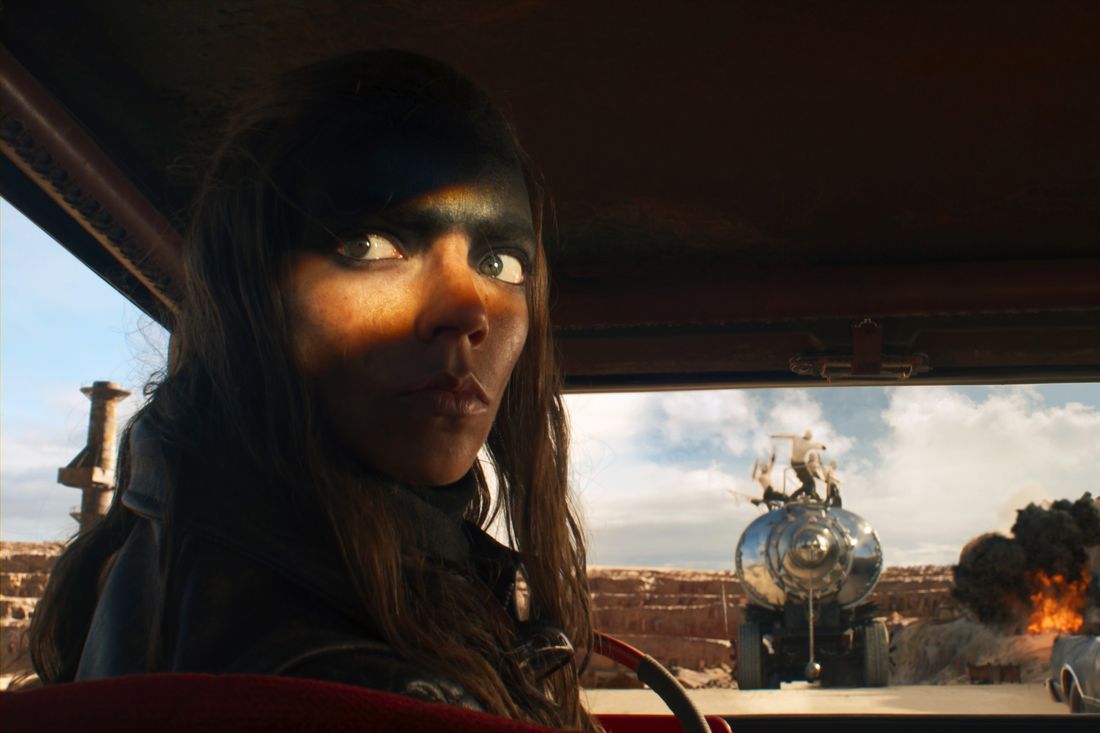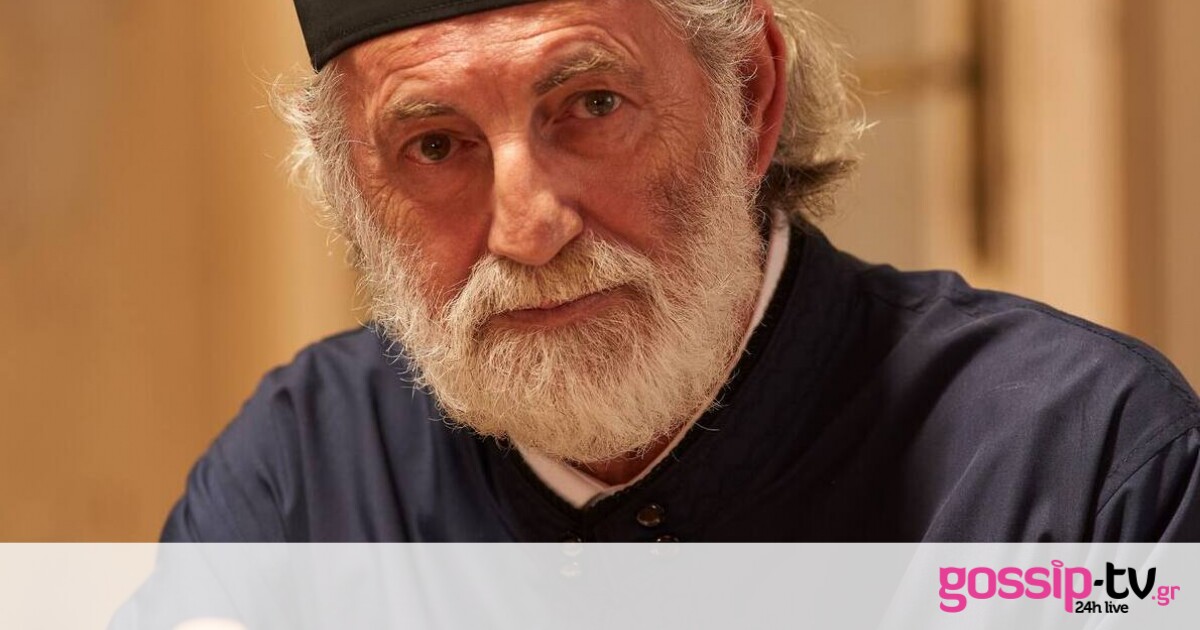Furiosa Isn’t Trying to Make the Apocalypse Look Cool
George Miller’s Fury Road sequel is bleaker and more fantastical than you might expect.
By
Bilge Ebiri,
a film critic for New York and Vulture

Photo: Warner Bros/Courtesy Everett Collection

Photo: Warner Bros/Courtesy Everett Collection
As the world falls around us, how must we bear its cruelties?” The words we hear right at the start of George Miller’s Furiosa: A Mad Max Saga are very much in line with the apocalyptic prologues of most of the films in the Mad Max series. But this time the question never dissipates, haunting Miller’s slow-burn epic like a malignant, merciless spirit. Furiosa feels like a personal and perhaps necessary counterpoint to the exhilarations of Mad Max: Fury Road. That 2015 masterpiece, a belated return to the postapocalyptic-gearhead action series upon which Miller had built his early career, was so rousing that it was easy to lose sight of the bigger, sadder picture. Furiosa — somber, steady, and supremely twisted — is a reminder that none of this stuff is really supposed to be cool. “We are the already dead, Little D, you and me,” Chris Hemsworth’s sadistic warlord Dementus says to Anya Taylor-Joy’s vengeful Furiosa at one point late in the film, using the nickname he gave her as a child. These are the End Times, and they are the End People.
Some Fury Road fans may have forgotten this bleak truth, but Miller clearly wants to remind them (us). A prequel, a revenge tale, and even something of a bildungsroman, the new film begins with young Furiosa (played as a child by Alyla Browne) kidnapped by a group of Dementus’s motorcycle marauders, who are then chased by her mother (Charlee Fraser), a member of the matriarchal Vuvalini tribe. Intending not just to save her daughter but also to make sure no outsiders learn of the Green Place, the Vuvalini’s verdant little oasis, Mom takes the riders out one by one. What makes this early chase so striking is the way Miller presents it as a relay race of dwindling resources: Everyone constantly scrambles to conserve what they have, transferring fuel tanks from one bike to another as soon as one rider goes down. Everything in this movie is always on the verge of running out and dying out.
This was a key idea behind the earlier Mad Max pictures, particularly 1981’s The Road Warrior, which unfolded as a terse thriller about people fighting over their last drops of gas and water. Of course, the first Mad Max, made in 1979, wasn’t really a postapocalyptic story. It did depict the early stages of societal breakdown, with institutions slowly falling apart as biker gangs rode unchecked through the Australian countryside, but it was also the kind of movie in which the hero, a highway cop named Max (Mel Gibson), could still go for a picnic with his family. That amplified the film’s tragedy and set up the sequels’ leap into the wasteland; once Max lost his family, Armageddon couldn’t have been far behind. Thus, Miller took a personal tragedy and turned it into a civilizational one. This series was born under the sign of grief, and continues to live there.
Now, in relating the story of Furiosa’s coming-of-age — first as a prized captive of Dementus, next as a potential bride for Immortan Joe (the villain of Fury Road, here played by Lachy Hulme, in slightly younger, less pustule-filled form), then as an apprentice to Praetorian Jack (Tom Burke), one of the Immortan’s War Rig drivers — Miller finds another personal angle on his postapocalyptic saga. Until now, the characters in these films have arrived mostly fully formed, their minds and attitudes shaped by this dead world. In Furiosa, however, we watch a bright, young innocent lose everything that has ever meant anything to her, and her heart hardens. Watching this version of the character, we can understand why Miller recast her, beyond mere issues of age. Fury Road star Charlize Theron’s tough, quiet confidence has here been replaced by Taylor-Joy’s anxious watchfulness. We see Furiosa go from a scrappy fighter just trying to survive to a more calculating figure, hellbent on revenge. Theron’s performance will still be the yardstick, but it’s hard not to be moved by Taylor-Joy’s transformation.
Miller’s work (including his non-Max films) has often featured characters trying to find, or maintain, surrogate families. Dementus makes bizarre gestures toward the same, treating Furiosa with a bizarre mixture of paternalism and savagery. Hemsworth plays him as a peacocking incompetent, which in most movies would drain the character of danger. But in the Mad Max universe, such buffoonery is often a prelude to unspeakable evil. All this adds to the pall of hopelessness that hangs over the movie as we absorb the lessons of the wasteland along with our growing heroine.
That’s not to say that Furiosa isn’t thrilling in its own right. Action sequences charge forward and build and build, casually leaving all manner of bodies in their wake. (Junkie XL’s score this time is less operatic as well, opting for steady rhythms instead of booming, electronica-inspired crescendos.) Miller still tosses in his beloved bits of makeshift technology — attack gliders with propellers, parachutists on skates, chariots made of motorcycles — and peculiar, throwaway characters, such as a guy named Pissboy who seems to exist solely to feed urine to a truck’s carburetor.
The director also indulges his fondness for yarn-spinning, as he did in his previous film, the much-maligned but masterful Three Thousand Years of Longing (2022), which fused A.S. Byatt and the Thousand and One Nights into a nesting doll of interconnected myths. With its use of disguises, its fanciful depiction of the passage of time, and the fabulistic shorthand with which it portrays certain characters, the occasionally episodic Furiosa feels of a piece with that earlier movie. It even has chapter breaks, not exactly a device one regularly encounters in wannabe summer blockbusters.
So, what will people think? The look of the film has a storybook quality that might bother those viewers who like to complain about fake-looking visual effects. To be clear, Furiosa looks fantastic. It also looks fantastical: The endless stretches of desert, the forbidding fortresses rising out of dead expanses, the raging sandstorms that turn characters into hazy Turner-smudges — none of these seem particularly real because, surely, they were never supposed to. Who knows what this will mean for the movie’s box-office fortunes, the kind of conversation our own apocalyptic discourse demands nowadays. This wouldn’t be the first time Miller has taken a big franchise sequel and turned it into something strange, sublime, and potentially off-putting. He is, after all, the man who almost ended an entire Hollywood studio with Babe: Pig in the City. Still, whether the new movie is deemed a hit or not, it’s nice to know that, after all these years, George Miller seems determined to stay true to his mad self.
-
Not Even Jennifer Lopez Seems to Know What Atlas Is Meant to Be
-
If Glen Powell’s Not Already a Star, This Movie Will Make Him One
-
Civil War Isn’t the Movie You Think It Is
Furiosa Isn’t Trying to Make the Apocalypse Look Cool
Note: This article have been indexed to our site. We do not claim legitimacy, ownership or copyright of any of the content above. To see the article at original source Click Here














